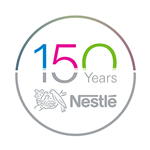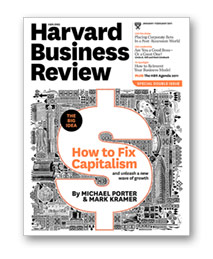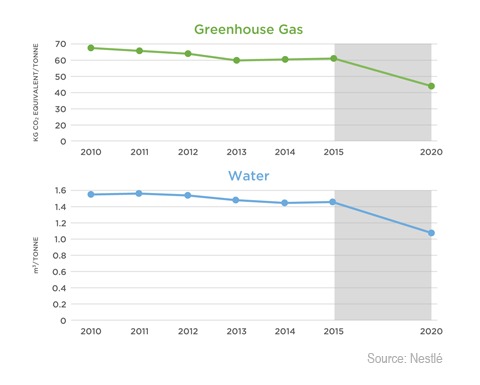![]() .
.
 Nestlé mark their 150th anniversary with key commitments to creating shared value in Canadian society. I look into their goals and progress as well as how their strategy of creating shared value differs from other corporate social responsibility programs.
Nestlé mark their 150th anniversary with key commitments to creating shared value in Canadian society. I look into their goals and progress as well as how their strategy of creating shared value differs from other corporate social responsibility programs.
Found in Nestlé’s global report and Canadian report are their social commitments on nutrition, health and wellness, environmental sustainability, and social impact. I will focus on the Canadian report and look at their goals and progress in environmental sustainability.
Before I get into those details, I want to highlight how Nestlé’s strategy of Creating Shared Value differs from the more common strategy of Corporate Social Responsibility. While the differences might seem subtle, they are very important and may lead to large consequences down the road.
Championed by Harvard economist Michael Porter and senior fellow Mark Kramer, Creating Shared Value (CSV) is a business concept that says a company is more competitive when their core business delivers values to the society in addition to their shareholders. Nestlé has adopted CSV into its corporate strategy since 2006. Every investment aims to create a sustainable value to the company’s business, its shareholders, and society as a whole. This helps Nestlé earn a number of recognitions, including Climate Disclosure Leadership Index Award, FTSE4Good, and Dow Jones Sustainability Indices. (See this case study for more details.)
With the more common strategy of CSR, a company maximizes shareholder value, then use some of those profits for social good. The problem is the first part of maximizing shareholder value often brings certain level of harm to the environment, their suppliers and customers, and the local communities. With CSV, a company creates economic value in a way that also creates social values.
 To illustrate the difference between CSR and CSV, Porter and Kramer use coffee procurement as an example. A CSR strategy may adopt Fair Trade and pay poor coffee bean farmers higher prices for the same crops. This redistributes “the pie” but does not expand it. A CSV strategy on the other hand helps farmers improve growing techniques and farm management to improve yields, product quality, and sustainability. This leads higher quality beans that fetch premium prices. “The pie” expands and both the farmers and buyers benefit, i.e. creating shared value. Porter and Kramer cite studies in the full article (subscription required) on cocoa farmers that suggest while Fair Trade can increase farmers’ incomes by 10% to 20%, shared value investments can raise their incomes by more than 300%.
To illustrate the difference between CSR and CSV, Porter and Kramer use coffee procurement as an example. A CSR strategy may adopt Fair Trade and pay poor coffee bean farmers higher prices for the same crops. This redistributes “the pie” but does not expand it. A CSV strategy on the other hand helps farmers improve growing techniques and farm management to improve yields, product quality, and sustainability. This leads higher quality beans that fetch premium prices. “The pie” expands and both the farmers and buyers benefit, i.e. creating shared value. Porter and Kramer cite studies in the full article (subscription required) on cocoa farmers that suggest while Fair Trade can increase farmers’ incomes by 10% to 20%, shared value investments can raise their incomes by more than 300%.

This is the strategy used by Nestlé in procuring for their Nespresso products. Nestlé worked with coffee bean growers to improve their farming practices. This led to better beans, higher yields, and smaller environmental footprint. The farmers earn higher income because they produce premium products. Nestlé get reliable supply of high quality beans. Values are gained by Nestlé, farmers, and the environment. (See this Harvard Business Review article for more details.)
As of 2016 all chocolate at Nestlé’s Toronto factory is certified by UTZ, the largest program for the sustainable farming of cocoa in the world, covering good agricultural practices, farm management, social and living conditions, and the environment. So the products that use this chocolate—including Kit Kat, Smarties, Aero and Coffee Crisp—involve helping cocoa farmers up their farming game. That’s the difference. CSV is not about philanthropy or giving back, but helping your stakeholders succeed, which in turn reinforce your own success. (See my article on The Transformational Company on how enterprises can set bold goals that touch their core business while addressing systemic societal risks and challenges.)

Nestlé Canada also made commitments to three measurable goals in the area of environmental sustainability:
- Achieve zero waste for disposal within their factories by 2020
- Reduce their greenhouse gas emissions by 35% (2010-2020 period)
- Reduce the water usage in their operations by 35% (2010-2020 period)
Note that while the goal on zero waste is an absolute measurement, the goals on GHG and water reduction are measured based on intensity: The GHG goal is measured by emission per tonne of product and the water goal is measured by water used per tonne of product.
Half way through their ten-year commitment period of 2010 to 2020, Nestlé has reported (PDF) some progress data up to 2015. Greenhouse gas emission drops from 68 kgCO2e per tonne in 2010 to 61 kgCO2e per tonne in 2015. This represents a 10% reduction. Water usage drops from 1.55 m3 per tonne in 2010 to 1.45 m3 per tonne in 2015. This represents a 7% reduction. Both areas should accelerate paces in order to meet the 35% reduction targets by 2020. As a side note, Nestlé Canada is ahead of Nestlé Global in GHG emission where the overall level in 2015 was at 68 kgCO2e per tonne. Go Canada!

Progress was also made towards the zero waste goal. Organic waste from production is used to produce biogas that in turn was combusted to generate electricity and heat. This and other waste management initiatives were applied to Nestlé’s ice-cream factory in London, Ontario as well as their chocolate factory in Toronto. Both of these factories as well as the Nestlé Professional Plant in Trenton have reached zero waste to landfill in March 2015, far ahead of the 2020 target. The Nestlé Purina PetCare plant in Mississauga is working towards zero waste by implementing a plan to divert compactor waste to energy in place of landfill.
Scholars argue Creating Shared Value is a more effective and more sustainable approach than Corporate Social Responsibility. Seek out opportunities for doing social good from your core business processes. Help your suppliers, distributors, consumers, and local communities succeed. See them as opportunities to drive productivity and profit rather than feel-good charity gestures. As I’ve previously shown in real world data, the greenest companies consistently outperform the markets.
That’s where Nestlé is headed, betting their long term successes on being able to bring successes to their stakeholders and societies. To quote Porter and Kramer, “profits involving a social purpose represent a higher form of capitalism—one that will enable society to advance more rapidly while allowing companies to grow even more. The result is a positive cycle of company and community prosperity, which leads to profits that endure … Shared value could reshape capitalism and its relationship to society.”
This article on Nestlé’s commitments to creating shared value in Canadian society is sponsored by Nestlé Canada. All opinions are my own.
